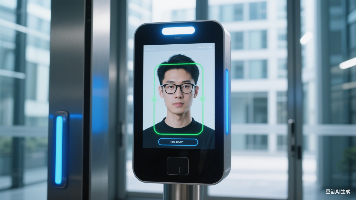当AI成为「模式匹配大师」:初级开发者如何修炼「情境智能」内功
本文探讨了在AI模式匹配能力日益强大的背景下,初级开发者如何培养"情境智能"这一关键能力。通过分析AI的模式匹配机制与人类情境理解能力的本质差异,揭示了在深度解读、意义构建和文化理解层面的不可替代性。文章提供了系统化的情境智能培养框架、实践方法和人机协作策略,帮助开发者在AI时代构建核心竞争优势,从被动的模式识别者转变为主动的意义创造者和价值设计者。
前言:哈喽,大家好,今天给大家分享一篇文章!并提供具体代码帮助大家深入理解,彻底掌握!创作不易,如果能帮助到大家或者给大家一些灵感和启发,欢迎收藏+关注哦 💕



📚📗📕📘📖🕮💡📝🗂️✍️🛠️💻🚀🎉🏗️🌐🖼️🔗📊👉🔖⚠️🌟🔐⬇️⬆️🎥😊🎓📩😺🌈🤝🤖📜📋🔍✅🧰❓📄📢📈 🙋0️⃣1️⃣2️⃣3️⃣4️⃣5️⃣6️⃣7️⃣8️⃣9️⃣🔟🆗*️⃣#️⃣
当AI成为「模式匹配大师」:初级开发者如何修炼「情境智能」内功

各位技术修行者们!今天咱们不聊那些老生常谈的AI替代论,而是探讨一个更有深度的话题——当AI在模式匹配方面越来越强大时,我们人类开发者该如何修炼那些AI难以企及的「内功心法」?这就像武侠小说里,外功招式易学,内功心法难修啊!🧘
先讲个真实案例:我的团队最近用AI分析用户行为数据时,发现了一个有趣的模式——用户在雨天更喜欢使用某个特定功能。AI建议"优化雨天用户体验",但团队里一位细心开发者却多想了一层:“为什么雨天会有这个模式?用户真正的需求是什么?” 深入调研后发现,原来用户在雨天更需要情感陪伴功能。这个洞察让产品方向发生了根本性转变。这就是人类情境智能的价值!🌟
📚 一、AI的「模式匹配」与人类的「情境理解」
AI确实在模式识别方面表现出色,但这种能力与人类的情境理解有着本质区别。
📘1. AI的模式匹配机制
AI通过算法进行模式匹配的过程可以用以下代码模拟:
# AI模式匹配引擎
class PatternMatchingEngine:
def __init__(self):
self.matching_algorithms = {
'statistical': StatisticalMatcher(),
'neural_network': NeuralNetworkMatcher(),
'sequence_analysis': SequenceAnalyzer(),
'anomaly_detection': AnomalyDetector()
}
self.pattern_library = PatternLibrary()
def match_patterns(self, data_stream, context=None):
"""在数据流中匹配模式"""
# 数据预处理
processed_data = self.preprocess_data(data_stream)
# 多算法并行匹配
pattern_matches = {}
for algo_name, algorithm in self.matching_algorithms.items():
matches = algorithm.find_matches(processed_data, context)
pattern_matches[algo_name] = matches
# 结果融合与验证
consolidated_matches = self.consolidate_matches(pattern_matches)
validated_matches = self.validate_matches(consolidated_matches)
return validated_matches
def preprocess_data(self, data):
"""数据预处理"""
preprocessing_steps = [
'normalization',
'noise_reduction',
'feature_extraction',
'dimensionality_reduction'
]
processed = data.copy()
for step in preprocessing_steps:
processed = apply_processing_step(processed, step)
return processed
def consolidate_matches(self, matches_dict):
"""融合多个算法的匹配结果"""
consolidated = {}
for algo_name, matches in matches_dict.items():
for pattern_id, confidence in matches.items():
if pattern_id not in consolidated:
consolidated[pattern_id] = []
consolidated[pattern_id].append(confidence)
# 计算平均置信度
final_matches = {}
for pattern_id, confidences in consolidated.items():
avg_confidence = sum(confidences) / len(confidences)
final_matches[pattern_id] = avg_confidence
return final_matches
# 使用示例
engine = PatternMatchingEngine()
user_behavior_data = collect_behavior_data()
matched_patterns = engine.match_patterns(user_behavior_data)
📘2. 「匹配」与「理解」的能力对比
通过以下表格清晰展示两种能力的差异:
| 能力维度 | AI「模式匹配」能力 | 人类「情境理解」优势 | 本质差异 |
|---|---|---|---|
| 处理范围 | 结构化数据 | 非结构化情境 | 人类优势 |
| 时间尺度 | 即时反应 | 历史上下文理解 | 人类优势 |
| 文化感知 | 表面模式 | 深层文化理解 | 人类优势 |
| 情感解读 | 情绪识别 | 情感共鸣理解 | 人类优势 |
| 价值判断 | 量化评估 | 质性价值权衡 | 人类优势 |
| 创意生成 | 组合创新 | 突破性创新 | 人类优势 |
📘3. 能力关系可视化
这个对比清晰展示了两种能力在不同层面的价值和作用。
📚 二、培养「情境智能」核心能力
在AI擅长模式匹配的时代,人类的情境智能变得愈发珍贵。
📘1. 情境智能能力框架
情境智能是多维度的能力综合体:
# 情境智能能力模型
class ContextualIntelligenceModel:
def __init__(self):
self.core_dimensions = {
'perceptual_acuity': {
'description': '情境感知敏锐度',
'sub_abilities': ['细节观察', '模式感知', '变化 detection']
},
'interpretive_depth': {
'description': '深度解读能力',
'sub_abilities': ['意义解读', '关联理解', '隐含洞察']
},
'temporal_understanding': {
'description': '时空理解能力',
'sub_abilities': ['历史上下文', '当下情境', '未来预见']
},
'cultural_intelligence': {
'description': '文化智能',
'sub_abilities': ['文化感知', '跨文化理解', '文化适配']
}
}
def assess_capabilities(self, individual_profile):
"""评估情境智能能力"""
assessment = {}
for dimension, details in self.core_dimensions.items():
score = self.evaluate_dimension(dimension, individual_profile)
assessment[dimension] = {
'score': score,
'description': details['description'],
'sub_abilities': details['sub_abilities']
}
return assessment
def create_development_plan(self, assessment):
"""制定能力发展计划"""
development_plan = {}
for dimension, data in assessment.items():
if data['score'] < 4: # 需要提升的维度
development_plan[dimension] = {
'priority': 4 - data['score'],
'learning_strategies': self.design_learning_strategies(dimension),
'practice_activities': self.recommend_practice_activities(dimension)
}
return development_plan
# 使用示例
model = ContextualIntelligenceModel()
developer_profile = collect_developer_profile()
assessment = model.assess_capabilities(developer_profile)
development_plan = model.create_development_plan(assessment)
📘2. 能力发展阶段
情境智能的培养需要经历循序渐进的阶段:
| 发展阶段 | 核心焦点 | 关键活动 | 成功指标 |
|---|---|---|---|
| 基础阶段 | 情境感知 | 观察训练、细节关注 | 感知敏锐度 |
| 进阶阶段 | 模式识别 | 模式分析、关联发现 | 模式识别率 |
| 高级阶段 | 深度解读 | 意义解读、隐含理解 | 解读深度 |
| 大师阶段 | 智慧应用 | 创新应用、价值创造 | 创新价值 |
📚 三、情境智能的实战应用
理论基础需要落实到实践,让我们看看情境智能如何应用在实际工作中。
📘1. 情境智能应用框架
建立系统化的情境智能应用流程:
# 情境智能应用框架
class ContextualIntelligenceFramework:
def __init__(self):
self.application_tools = {
'context_mapping': ContextMapper(),
'stakeholder_analysis': StakeholderAnalyzer(),
'cultural_analysis': CulturalAnalyst(),
'temporal_analysis': TemporalAnalyst()
}
def apply_contextual_intelligence(self, problem_context, data_patterns):
"""应用情境智能解决问题"""
# 深度情境分析
context_analysis = self.analyze_context(problem_context)
# 模式情境化解读
contextualized_patterns = self.contextualize_patterns(data_patterns, context_analysis)
# 多视角整合
integrated_insights = self.integrate_perspectives(contextualized_patterns)
# 生成情境智能方案
contextual_solutions = self.generate_contextual_solutions(integrated_insights)
return contextual_solutions
def analyze_context(self, problem_context):
"""深度分析情境"""
context_dimensions = {
'cultural_context': self.analyze_cultural_context(problem_context),
'historical_context': self.analyze_historical_context(problem_context),
'social_context': self.analyze_social_context(problem_context),
'temporal_context': self.analyze_temporal_context(problem_context)
}
return context_dimensions
def contextualize_patterns(self, patterns, context_analysis):
"""将模式置于情境中解读"""
contextualized = {}
for pattern_id, pattern_data in patterns.items():
# 添加情境解读
pattern_interpretation = self.interpret_pattern_in_context(pattern_data, context_analysis)
# 评估情境相关性
contextual_relevance = self.assess_contextual_relevance(pattern_interpretation, context_analysis)
contextualized[pattern_id] = {
'pattern_data': pattern_data,
'interpretation': pattern_interpretation,
'relevance': contextual_relevance
}
return contextualized
# 使用示例
framework = ContextualIntelligenceFramework()
problem_context = gather_problem_context()
data_patterns = collect_data_patterns()
contextual_solutions = framework.apply_contextual_intelligence(problem_context, data_patterns)
📘2. 应用流程可视化
有效的情境智能应用需要清晰的思维流程:
这个流程确保情境智能的系统性应用和持续提升。
📚 四、人机协作的情境增强模式
在AI时代,最优策略是人机协作,共同提升情境理解能力。
📘1. 智能情境增强系统
建立人机协作的情境增强框架:
# 人机协作情境增强系统
class EnhancedContextSystem:
def __init__(self):
self.ai_components = {
'data_processing': AIDataProcessor(),
'pattern_mining': AIPatternMiner(),
'correlation_analysis': AICorrelationAnalyzer(),
'trend_prediction': AITrendPredictor()
}
self.human_components = {
'context_interpretation': HumanContextInterpreter(),
'cultural_understanding': HumanCulturalUnderstander(),
'value_judgment': HumanValueJudge(),
'ethical_consideration': HumanEthicsAdvisor()
}
def collaborative_context_understanding(self, raw_data, human_insights):
"""协作情境理解"""
# AI数据处理和模式发现
ai_processed = self.ai_process_data(raw_data)
ai_patterns = self.ai_discover_patterns(ai_processed)
# 人类情境解读
human_interpreted = self.human_interpret_patterns(ai_patterns, human_insights)
# 协同意义构建
collaborative_meaning = self.collaborative_meaning_making(human_interpreted)
# 生成情境智能洞察
contextual_insights = self.generate_contextual_insights(collaborative_meaning)
return contextual_insights
def ai_process_data(self, data):
"""AI处理数据"""
processed = {}
for component_name, component in self.ai_components.items():
component_result = component.process(data)
processed[component_name] = component_result
return processed
def human_interpret_patterns(self, patterns, human_insights):
"""人类解读模式"""
interpreted = {}
for pattern_set in patterns.values():
for pattern in pattern_set:
human_interpretation = self.human_components['context_interpretation'].interpret(
pattern, human_insights)
pattern['human_interpretation'] = human_interpretation
interpreted.append(pattern)
return interpreted
# 使用示例
context_system = EnhancedContextSystem()
raw_data = collect_raw_data()
human_insights = gather_human_insights()
contextual_insights = context_system.collaborative_context_understanding(raw_data, human_insights)
📘2. 协作效果分析
不同协作模式的效果对比:
| 协作模式 | AI角色 | 人类角色 | 协作效果 | 适用场景 |
|---|---|---|---|---|
| 数据增强 | 数据处理 | 情境解释 | 🌟🌟🌟🌟🌟 | 复杂数据分析 |
| 模式互补 | 模式发现 | 意义赋予 | 🌟🌟🌟🌟 | 用户行为理解 |
| 洞察协同 | 洞察生成 | 价值判断 | 🌟🌟🌟🌟🌟 | 战略决策 |
| 创新合作 | 创意激发 | 方向引导 | 🌟🌟🌟🌟 | 产品创新 |
📚 五、情境智能的培养路径
培养优秀的情境智能需要系统的学习和实践路径。
📘1. 个人发展路线图
# 情境智能发展计划
class ContextualIntelligenceDeveloper:
def __init__(self, current_level, target_level):
self.development_stages = {
'novice': {'focus': '基础感知', 'duration': '2-4个月'},
'apprentice': {'focus': '模式识别', 'duration': '3-6个月'},
'practitioner': {'focus': '深度解读', 'duration': '6-12个月'},
'expert': {'focus': '智慧应用', 'duration': '1-2年'},
'master': {'focus': '创新引领', 'duration': '2-3年'}
}
def create_development_plan(self):
"""创建发展计划"""
current_stage = self.assess_current_stage()
target_stage = self.define_target_stage()
development_path = self.map_development_path(current_stage, target_stage)
learning_activities = self.recommend_learning_activities(development_path)
practice_projects = self.suggest_practice_projects(development_path)
return {
'current_stage': current_stage,
'target_stage': target_stage,
'development_path': development_path,
'learning_activities': learning_activities,
'practice_projects': practice_projects,
'success_metrics': self.define_success_metrics()
}
def recommend_learning_activities(self, development_path):
"""推荐学习活动"""
activities = []
for stage in development_path:
stage_activities = {
'novice': ['观察力训练', '细节记录', '情境感知基础'],
'apprentice': ['模式识别练习', '关联发现', '基础分析技巧'],
'practitioner': ['深度解读训练', '意义构建', '情境分析进阶'],
'expert': ['智慧应用实践', '创新思维', '战略情境分析'],
'master': ['领导力发展', '变革引领', '生态系统思考']
}
activities.extend(stage_activities.get(stage, []))
return activities
# 使用示例
developer = ContextualIntelligenceDeveloper('novice', 'practitioner')
development_plan = developer.create_development_plan()
📘2. 实践训练计划
制定具体的情境智能训练计划:
| 训练领域 | 训练活动 | 训练频率 | 预期成果 | 评估方法 |
|---|---|---|---|---|
| 感知训练 | 情境观察练习 | 每日15分钟 | 提升感知敏锐度 | 观察记录质量 |
| 分析训练 | 模式分析案例 | 每周3案例 | 增强分析能力 | 分析深度评分 |
| 解读训练 | 深度解读实践 | 每周2次 | 提高解读深度 | 解读准确性 |
| 应用训练 | 创新应用项目 | 每月1项目 | 提升应用能力 | 应用效果评估 |
📚 六、成为情境智能大师
在AI擅长模式匹配的时代,情境智能大师将拥有不可替代的价值。
📘1. 竞争优势构建
构建基于情境智能的竞争优势:
# 情境智能竞争优势构建器
class ContextualAdvantageBuilder:
def __init__(self, personal_skills, market_needs):
self.advantage_components = {
'deep_understanding': self.develop_deep_understanding,
'cultural_intelligence': self.build_cultural_intelligence,
'strategic_insight': self.enhance_strategic_insight,
'innovative_application': self.improve_innovative_application
}
def build_competitive_advantage(self):
"""构建竞争优势"""
advantage_profile = {}
for component, builder in self.advantage_components.items():
capability_level = builder()
advantage_profile[component] = {
'capability_level': capability_level,
'market_value': self.assess_market_value(component),
'competitive_edge': self.assess_competitive_edge(capability_level)
}
return advantage_profile
def develop_deep_understanding(self):
"""培养深度理解能力"""
# 情境感知训练
context_perception = self.train_context_perception()
# 模式深度解读
pattern_interpretation = self.develop_pattern_interpretation()
# 意义构建能力
meaning_construction = self.cultivate_meaning_construction()
return {
'context_perception': context_perception,
'pattern_interpretation': pattern_interpretation,
'meaning_construction': meaning_construction
}
def assess_competitive_edge(self, capability):
"""评估竞争优势"""
# 与AI能力比较
vs_ai = self.compare_with_ai(capability)
# 与同行比较
vs_peers = self.compare_with_peers(capability)
# 综合竞争优势
overall_advantage = (vs_ai * 0.7 + vs_peers * 0.3)
return {
'vs_ai': vs_ai,
'vs_peers': vs_peers,
'overall': overall_advantage
}
# 使用示例
builder = ContextualAdvantageBuilder(my_skills, market_needs)
advantage_profile = builder.build_competitive_advantage()
📘2. 持续进化机制
建立持续学习和能力进化的良性循环:
这个循环确保能力的持续提升和价值的持续创造。
📚 七、结语:情境智能致胜的时代
各位开发者朋友,我们正在进入一个"情境智能致胜"的时代。在这个时代,能够深度理解情境、赋予模式意义的能力,变得比以往任何时候都更加珍贵。
AI确实在模式匹配方面有着强大能力,但人类的情境智能——那种基于深度理解、文化感知和意义构建的能力——是AI难以替代的独特优势。
培养情境智能需要系统的训练、持续的实践和不断的反思。但正是这种投入,让我们在AI时代保持不可替代的价值,从被动的模式识别者转变为主动的意义创造者。
记住,最好的技术专家不是那些最能识别模式的人,而是那些最能理解模式意义的人。让我们培养这种珍贵的情境智能,成为在智能时代更加不可或缺的价值创造者。
到此这篇文章就介绍到这了,更多精彩内容请关注本人以前的文章或继续浏览下面的文章,创作不易,如果能帮助到大家,希望大家多多支持宝码香车~💕,若转载本文,一定注明本文链接。

更多专栏订阅推荐:
👍 html+css+js 绚丽效果
💕 vue
✈️ Electron
⭐️ js
📝 字符串
✍️ 时间对象(Date())操作
更多推荐
 已为社区贡献94条内容
已为社区贡献94条内容







所有评论(0)